South Bend at-large candidates talk crime, equity in economic development, other topics
The Tribune is partnering with the League of Women Voters of the South Bend Area and the American Democracy Project of Indiana University South Bend to publish candidates' answers to questions on the issues. The League, with local help from the ADP, operates Vote411.org, a website with information about the candidates and their positions on key issues.
The Tribune has agreed to run candidate answers unedited, meaning any spelling, typographical or grammatical errors are the candidates' own. The Tribune is publishing only some of the questions from a selection of contested races. Additional questions and answers, including from candidates who have no opponent in the primary, are available at Vote411.org.
Early voting for Indiana's May 2 municipal primary election began last week. To vote early, either fill out an application for a mail ballot at https://indianavoters.in.gov/MVPHome/PrintDocuments or vote in person. In St. Joseph County, there are two early-voting locations: the County-City Building, 227 W. Jefferson Blvd. in South Bend; or the Mishawaka County Services Building, 219 Lincoln Way W. in Mishawaka. Voters must present a valid government-issued photo ID.
Early-voting hours at both locations are 8 a.m. to 4:30 p.m. Mondays through Fridays (except May 1, when voting closes at noon.); 8 a.m. to 4 p.m. on Saturdays April 22 and 29; 1 to 4 p.m. Sunday, April 30.
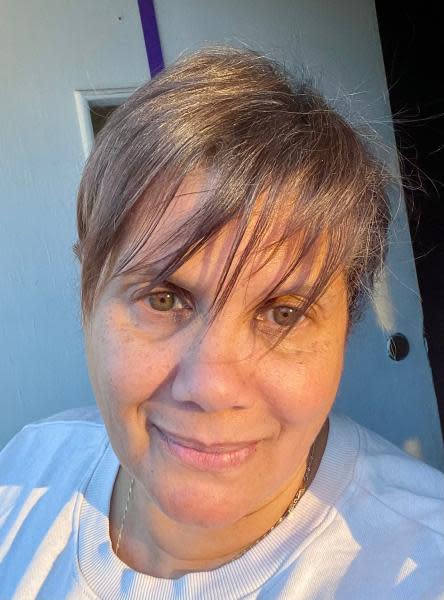
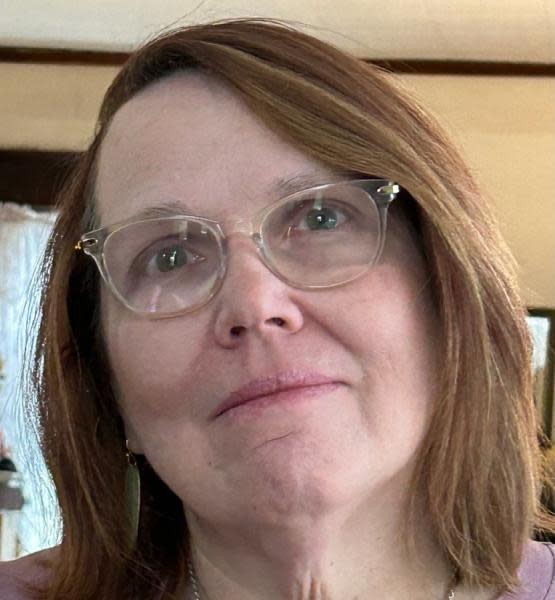
Three of the nine members are South Bend's Common Council are elected at large, meaning they represent the whole city rather than one district. Voters can pick up to three candidates to support. Two Republican challengers will definitely be on the fall ballot: The Tribune will publish responses from Heidi-Sunje Bell and Rhonda Richards at that time.
On the Democratic side, former council member Oliver Davis and Laquita Hughes challenge the three incumbents: Karen White, Lori Hamann and Rachel Tomas Morgan.
Oliver Davis
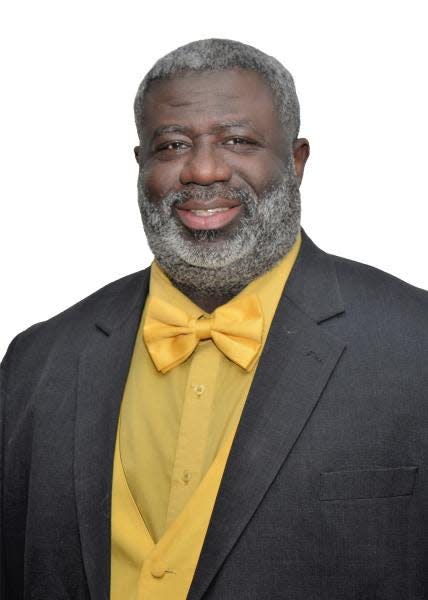
Occupation: School social worker at South Bend schools and Social work and gerontology faculty at Saint Mary's College
Email: oliverdavis4citycouncilatlarge@gmail.com
Campaign phone: 574-876-6938
Facebook: facebook.com/Mustangs1987
Lori Hamann
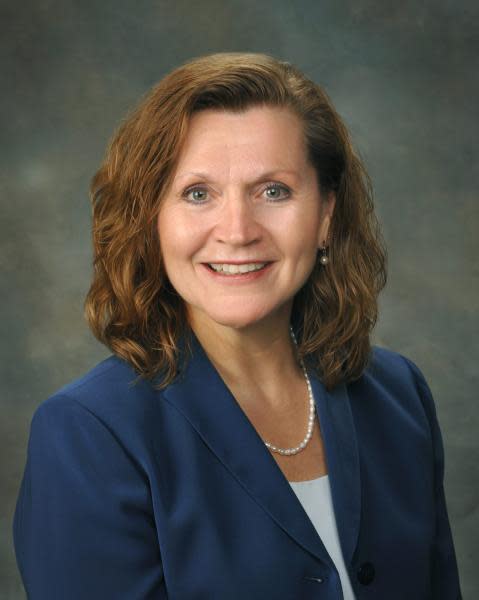
Occupation: Teacher and department chair at Marian High; South Bend Common Council member
Email: lorikhamann@gmail.com
Campaign phone: 574-514-7405
Facebook: facebook.com/lori.khamann
Laquita Hughes
Occupation: Business owner
Email: votehughessbi@gmail.com
Campaign phone: 574-514-6589

Rachel Tomas Morgan
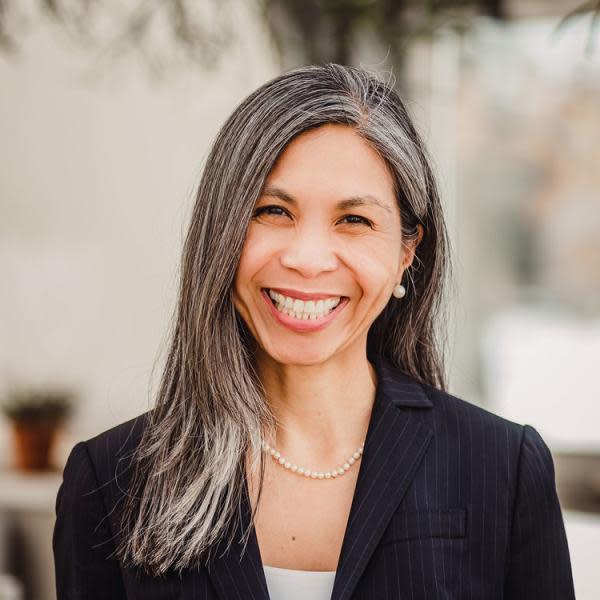
Occupation: South Bend Common Council member; Former higher education educator & administrator
Email: info@rachelforcouncil.com
Website: rachelforcouncil.com
Campaign phone: 574-250-3770
Facebook: facebook.com/rachelforcouncil
Karen White
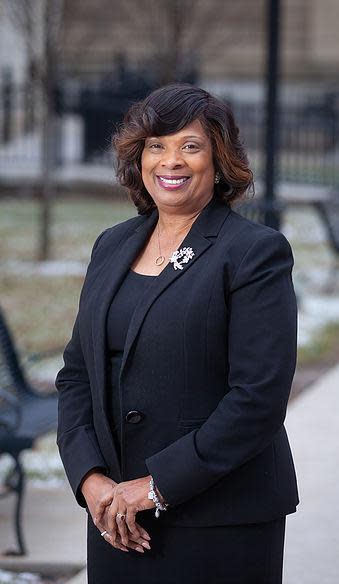
Occupation: South Bend Common Council member; Retired Associate Vice Chancellor at IUSB
Email: kwhite4211@gmail.com
Website: reelectkarenwhite.com
Campaign phone: 574-229-3100
Facebook: facebook.com/councilwomankarenwhite
What is the most important challenge facing South Bend and how will you address it?
Davis: South Bend’s biggest challenge is ensuring that all districts within the city are equitably funded annually. Historically in South Bend and throughout America, prosperity can be tied to zip codes. We must change that here and ensure high-quality city services blanket each part of our city. Whether infrastructure, health, safety, or any other pressing issue, we must actively and continuously assess our work so that all are able to prosper. That will beacon to others the strengths of our city in a manner which invites others to move here to live, to work, and to enjoy South Bend and all that it provides to families and businesses. Our goal must remain all, no matter your station, will be proud to say that South Bend is Home and all, no matter your station, will be truly welcome.
Hamann: Almost all of the issues on my list of possible “most important challenges” stem from one very unfortunate reality: we have not done enough to address the inequality that exists in our city. Whether we discuss the issues of affordable housing, violent crime, failing schools or homelessness and mental health, it all boils down to the fact that we have, for years, ignored entire segments of our city in an effort to achieve economic growth. All recent educational studies point to inequity as the core driver of these issues mentioned above. As a Common Council Member, I have worked tirelessly with these affected communities in an attempt to bring forth equitable solutions. If reelected, you have my commitment that I will not rest until these changes are enacted and enforced to relieve the unjust suffering in our city.
Hughes: 1. Crime Prevention and Reduction: We need to implement new crime prevention strategies. We have one of the worst crime rates in the State of Indiana, according to the FBI. We need to fund the Peacemaker Fellowship program that was supported by Faith in Indiana. It reduced crime by 80% over 7 years in a city in California. 2. Affordable Housing: I support efforts to invest $12 million into the Housing Authority. The Housing authority is the largest affordable housing provider in the city. We need 6,000 units of housing. The 300 units that my opponents are touting are not enough, and they do not even exist yet.
Tomas Morgan: Public safety is the top concern I hear from residents. This can mean feeling free from any potential harm, and Council plays a key role in decisions affecting quality of life. I believe every person should feel safe, secure, that they belong. To that end, I support adopting best practices in policing; infrastructure improvements in streets, sidewalks, and lighting; expansion of quality, affordable housing; efforts to house the most vulnerable; thriving businesses and quality jobs; and revitalizing public spaces to foster a sense of pride and place. We need to ensure our youth have outlets for positive activities, that parents have options for quality childcare, that all can use streets without fear of speeding cars or distracted drivers, and that we address the harms climate change and food insecurity bring.
White: The most important challenge facing the City of South Bend is gun violence. The alleviation of crime and keeping our citizens safe remain a top priority. 2022 had LESS incidents of violence but more people shot compared to 2021. 2021 had less people shot but more incidences of shootings We must address gun violence from a holistic perspective, and as a public health safety issue, and treat it as such. Prevention and Intervention strategies must address the root causes of violence and create policies/programs to treat them. The root causes are many and varied. There is a dire need to have a comprehensive community safety plan with implementation to occur after having all stakeholders at the table. We need to combine all our efforts into a holistic plan.
What is the best way to curb crime? Should we increase police staffing, technology and budgets? Or should we redirect resources away from policing? Explain your reasoning.
Davis: Addressing crime in South Bend is not just the responsibility of our local police and public safety officials. While we need to continually support our local public safety officials, and as an At-Large Councilmember, I will include various local partners such as our schools, churches, businesses, civic groups, and mental health professionals to promote non-violence, shared safety, and improved health throughout our populations no matter their age, gender, geography, or background. Also, I will promote throughout our city the beautification of our neighborhoods and parks and advocate for environmental justice funding, as public safety, in our residential and in our brownfield areas which may have historically had hazardous substances, pollutants, or contaminants. All our residents deserve spaces to flourish and to find a better path.
Hamann: As a Detroit area native, I am a huge skeptic of the Real Time Crime Center and the implementation of surveillance cameras. Even Detroit City Council members say that their “Green Light Program'' has done little to curb crime in the neighborhoods. Furthering its implementation here in South Bend should be done with extreme caution. Additionally, we now have a full police force. The next change should be to establish a Community Engagement Policing Model. Simply having more officers will not reestablish trust. Chasing Shot Spotter will not change the environment in these neighborhoods. This new model will help to reestablish trust, offer residents assistance regarding traffic issues and CODE, and create relationships. This along with the Community Police Review Board will allow the residents a voice in how our city is being policed.
Hughes: In some cases, increasing police staffing may help reduce crime. For instance, investing in advanced technology can improve crime detection and response times, while providing officers with better tools and training can enhance their effectiveness. In terms of redirecting resources away from policing, we should redirect resources towards social programs and addressing the root causes of crime may be more effective in reducing crime rates. This can involve investing in education, mental health services, job training, and affordable housing to create a more equitable and stable society. By addressing the underlying social and economic issues that lead to crime, communities may be able to prevent criminal behavior before it occurs.
Tomas Morgan: Reducing crime demands a data-informed, multi-disciplinary response, with solutions that strengthen both community and enforcement-based approaches. I supported providing resources for our police and firefighters in the form of pay increases and residency incentives, along with resources to effectively recruit. For the first time in many years, SBPD will soon be fully staffed with the most diverse force ever. I also supported resources for enhanced, cutting-edge technology and the creation of the violent crimes unit and the Real Time Crime Center as critical to solving crimes and, in turn, helping to deter crime. Both personnel and technology investments are critical to reducing crime and enhancing public safety in our community. In addition, I support investments that address the social and environmental conditions that foster crime.
White: There is not necessary a best way to curb crime. They are best practices. One of them is community policing. Staff, resources, citizens’ involvement, cultural diversity training are valuable. Community policing is important to building and creating community trust. Officers become part of the neighborhoods they serve. They are able to get a better sense of residents’ needs and help residents to develop greater trust in the police. Our residents also have an opportunity to see them differently. Redirecting resources away from policing will not curb crime. From a practical standpoint, the engagement must begin at the elementary school level. We must work closely with our students, neighborhood associations, religious institutions, and all schools beginning at the elementary level.
Targeted shootings have increased significantly compared to five years ago. How can the council address the issue of local gun violence?
Davis: The key action which the South Bend Common Council can enact regarding targeted shootings is to ensure that our public safety officials, via our City's budget, have the most up to date training, technology, and the staff support to prudently address the ever-changing public safety needs of our city. As a school social worker and as a teacher, I have seen the growing individual and family conflicts which often begin on social media and spill into our neighborhoods. We need to encourage responsible socialization both on and offline and for all ages, who can also benefit from respectful discourses that will protect us as we continually are influenced through changing technologies, platforms, and interactions on a daily basis in our homes, in our schools, and in our city as a whole.
Hamann: Several years back, the city implemented such anti-violence programs as GVI and SAVE. Although these programs did initially have some impact and work in other cities, they do not seem to be effective in our current crime environment. This is not a statement about the people working these programs who I believe to be very dedicated and fine individuals. It is that the landscape of crime in SB has changed. Add in legislation such as permit-less carry and we are the "Wild West". With these changes, we need new tools. Additionally, our recent push to achieve economic growth/development has also led to economic inequality and gentrification. The fact that the 4th District has seen nearly a 50% decrease in the number of Black residents should be throwing up a number of red flags. We must reexamine our approach.
Hughes: I can tell you that one of my child care centers had to close because of all of the shootings. I know small business owners and residents are frustrated with the violence. Our elders are afraid to go outside at night. We must fund Peacemaker Fellowships. This program was supported by Faith in Indiana and reduced shootings by over 75% over 7 years in Richmond, California. It focuses specifically on suspected shooters by offering them employment opportunities, mental health counseling, peer-to-peer mentorship and opportunities to travel and see the world so they know life is bigger than their violence neighborhoods.
Tomas Morgan: Lives are lost every day to gun violence with the burden of this violence disproportionately impacting communities of color. Local data also shows that shootings are perpetuated by small sets of groups and individuals. Common-sense gun reform is critical to reducing gun violence, but these decisions are outside local jurisdiction. Local governments can make direct economic development investments in those areas of their city most affected by gun violence, and can support investment in community-based violence intervention initiatives. On Council, I have supported economic and community investments in hardest hit areas as well as resources for the Group Violence Intervention (GVI), the ALIVE grants for initiatives that positively impact our youth, technology to assist in the arrest of shooters, and South Bend’s own violent crimes unit.
White: A number of initiatives have been developed and/or funded to address the factors that increase the risk of gun violence in previous questions. We must identify ways in which to reduce access to firearms specifically with our children and youth. Because of state preemption laws local jurisdictions are restricted from enacting specific prevention laws. Hence, we must continue to work with public safety officials, community agencies, schools, neighborhoods associations, business owners and our citizens in preventing gun violence in tangible and effective ways.
Many recognize a disparity in economic growth in different parts of the city. What steps will you take to ensure economic growth and development is more widely distributed across the entire community?
Davis: Economic growth hinges on our entire city and all its residents being lifted up. Our past efforts to promote our downtown area should now be expanded to include all of our entry areas. With the closing of Wal-Mart on the Northside of our city (Portage Avenue, Cleveland Road, and Bendix Drive), we need to address our financial plan to reinvest in that area. On our Southside (Ireland Road, Michigan Street, and Main Street), on the Westside (Sample Street, Western Avenue and Lincolnway West), and on our Eastside (Mishawaka Avenue, Miami Street, and Lincolnway East) we need to promote targeted financial growth. Thus, as we lift up our city on all four corners and in our downtown area of our City of South Bend, we can ensure that our overall economic growth is maximized to benefit all of us.
Hamann: There are several sectors of the city where street curbs and sidewalks are nonexistent or crumbling. Code enforcement seems ill-equipped to address the level of need and concern in many areas. Residents are fed up and rightfully so. I have identified a number of approaches I intend to pursue. One positive changes may be in the Office of Diversity and Inclusion. I do not lay blame on any one person, but, the minority residents had such high hopes for the creation of this office, hoping for a path toward equal opportunity in funding for small businesses and financial training. I have attended a number of meetings with the local small business owners and they do not feel that this program is working. With a new director we can increase our focus on more equitable investment.
Hughes: 1. Invest in underserved areas: Direct public investments, such as infrastructure improvements, parks, and community centers, to underserved areas to make them more attractive for private investment and development. 2. Encourage local entrepreneurship: Support small businesses and entrepreneurs in disadvantaged areas through business incubators, access to capital, and technical assistance programs. This can help create jobs and stimulate economic activity at the neighborhood level. 3. Workforce development and training: Partner with local educational institutions, businesses, and nonprofits to create job training and workforce development programs that prepare residents for high-demand industries and jobs, especially in economically disadvantaged areas.
Tomas Morgan: In 2019, I ran on wanting to extend community and economic investments to all corners of the city. Over the past few years, South Bend has seen unprecedented development across the city and especially in parts that have not seen investment in a long time. These include the expansion of public WiFi; of affordable, workforce, and market-rate housing options in vacant buildings and on vacant land; and of pre-K opportunities in areas of greater need. We are building a new MLK Dream Center to create opportunities for youth in westside neighborhoods and to activate the Linden Avenue business corridor. Small businesses across the city can get a facelift with the new “Vibrant Places” grants. We are keeping, expanding, and attracting business and industry to South Bend. I am committed to building on this progress.
White: Economic growth in all of our neighborhoods is vital for South Bend to thrive. Recent population data from the U.S. Census Bureau showed that South Bend grew by 2,285 people over the last ten years. “This has been the largest increase in the city’s population since the 1960 Census.” We are no longer a dying city, but instead a vibrant, still blossoming one. Economic development must be comprehensive and inclusive. We must proactively and intentionally address long-standing issues related to inequality and inequity. We must articulate and address residents’ needs so that real change occurs, and the residents trust that development will happen. We are moving in the right direction by creating oppo. attracting small business and industries to our city. Why? Jobs are created, and revenue remains in our community.
This article originally appeared on South Bend Tribune: Gun violence, tax abatements debated by South Bend council candidates
